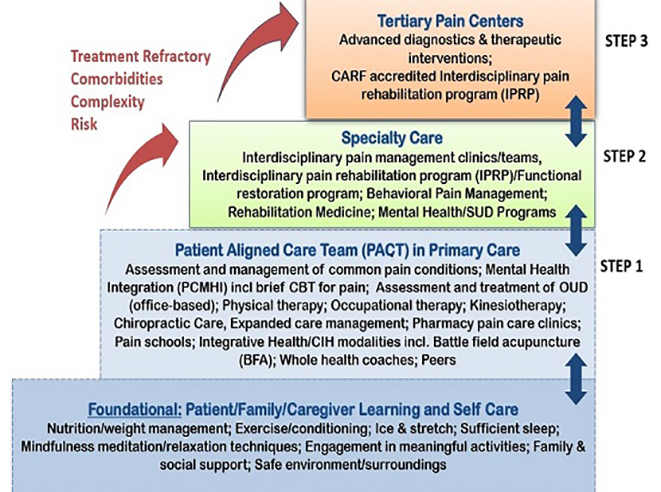
Meditation can have many benefits for your work life. Many companies incorporate meditation into their business processes. Although you can meditate almost anywhere, it is best to start your practice in an office. You can schedule a time each day to meditate on your calendar. You can then follow this up by setting aside a time each day for meditation. Here are some ideas to get you started. You may be surprised at the results. Be concise and keep it simple.
Turn off your mobile phone before beginning meditation. Print a guide or a calm audio track. Set a timer and begin. You can visualize a peaceful space. This is a great way for you to reset your thoughts. Wearing tight clothing that restricts movement is a great way to help you focus. Comfortable clothing and a comfortable position will enable you to sit comfortably for 20 minutes.

Once you have established a routine, find a peaceful place to meditate. You may be able to meditate during your lunch break, or in the middle of the day. Meditation will be more enjoyable in a quieter place. You have the option to use your bathroom, conference room or kitchen if you don't feel like finding a quiet spot to meditate. You may even want to venture outside, if possible.
Start by informing employees about the benefits when you establish a meditation program at work. After they have learned the benefits of meditation, it is possible to give them incentives to participate. To help them get started, you can offer a video guide. You should ask employees to rate the sessions after each one. It is helpful to know how they are doing. You can ask them for feedback once you're done.
Meditation for work is a great way of relaxing after a long day. If you're feeling overwhelmed, you can try a guided meditation for work that allows you to listen to the sound of your breathing. You can also practice guided meditation at your desk. You can spend time with your colleagues during a meditation session for work. There are many benefits of meditating at your job. Besides reducing stress, it also helps you be more creative and focused.

Meditation for work is more than just a great way to improve your health. Meditation can also have a positive effect on the relationships between employees and their coworkers. It leads to greater communication and better expression of emotions. It also increases the ability of your employees to work more efficiently. Meditation for work can help employees reduce stress and improve their focus. It also increases their motivation. These benefits can make your staff more productive and happy, and help your company's bottom line.
FAQ
How can I live the best life possible every day?
Finding out what makes your heart happy is the first step to living a fulfilled life. Once you are clear about what makes you happy and satisfied, you can move on to the next step. You can also ask other people what they do to live the best lives possible every day.
You can also read books like "How to Live Your Best Life" by Dr. Wayne Dyer. He discusses finding happiness and fulfillment throughout our lives.
Is being cold bad for your immune system?
It's been said that there are two kinds of people in the world; those who love winter and those who hate it. You might wonder why you feel so miserable in the cold, no matter how much you love or hate winter.
The answer lies in the fact that our bodies are designed to function best during warm weather. In fact, we evolved to thrive in hot climates because that's where most of our food sources are located.
However, our environment is quite different than that of our ancestors. We spend much more time indoors, often exposed to extreme temperatures (cold and heat), and we eat foods that are processed rather than fresh.
Our bodies don't have the ability to tolerate extremes. That means that when we do venture outdoors, we're left feeling tired, sluggish, and even sick.
There are ways to combat these effects though. Keep your body hydrated. If you drink plenty of water, you'll help keep your body properly hydrated and flush toxins from your system.
Another important step is to ensure that you're eating healthy meals. Consuming healthy food helps maintain your body's optimal temperature. This is particularly helpful for anyone who spends long periods of time inside.
It is worth taking a few extra minutes each day to meditate. Meditation helps to calm your mind and body which can make it easier to deal stress and illness.
What's the difference between fat or sugar?
Fat is an energy source that comes from food. Sugar is a sweet substance found naturally in fruits and vegetables. Both fats (and sugars) have the same calories. However, fats contain more than twice as many calories as sugars.
Fats are stored within the body and can contribute to obesity. They can lead to cholesterol buildup in the arteries, which could cause heart attacks or strokes.
Sugars can be quickly absorbed by your body and give you instant energy. This causes blood glucose to rise. High blood glucose levels are dangerous as it can increase the likelihood of developing type 2 diabetes.
Which diet is best for me?
The best diet for you depends on several factors, like your age, gender, weight, health conditions, and lifestyle habits. It is also important to think about how much energy you use during exercise and whether you like low-calorie foods.
Intermittent fasting might be an option for you if your goal is to lose weight. Intermittent Fasting means that you eat only specific meals throughout your day and not three large meals. This method may work better than traditional diets which include daily calorie counts.
Some studies suggest that intermittent fasting may improve insulin sensitivity and reduce inflammation, which can lead to improved blood sugar levels and reduced risk of diabetes. Other research suggests that intermittent fasting may promote fat loss and improve overall body composition.
What is the difference between calories and kilocalories in food?
Calories measure the energy content of food. Calories is the unit of measurement. One calorie is equal to one degree Celsius in energy.
Kilocalories can also be used to refer to calories. Kilocalories measure in thousandths a calorie. For example, 1000 calories equals one kilocalorie.
Statistics
- According to the 2020 Dietary Guidelines for Americans, a balanced diet high in fruits and vegetables, lean protein, low-fat dairy and whole grains is needed for optimal energy. (mayoclinichealthsystem.org)
- In both adults and children, the intake of free sugars should be reduced to less than 10% of total energy intake. (who.int)
- WHO recommends consuming less than 5% of total energy intake for additional health benefits. (who.int)
- nutrients.[17]X Research sourceWhole grains to try include: 100% whole wheat pasta and bread, brown rice, whole grain oats, farro, millet, quinoa, and barley. (wikihow.com)
External Links
How To
What does the term "vitamins" mean?
Vitamins are organic compounds found naturally in food. Vitamins aid us in absorbing nutrients from the food we eat. The body cannot make vitamins; therefore, they must be obtained from food.
There are two types if vitamins: water soluble, and fat soluble. Water soluble vitamins dissolve easily in water. These include vitamin C (thiamine), Vitamin B1 (riboflavin), Vitamin B2 (riboflavin), Vitamin B3 (niacin), Vitamin B6 (pyridoxine), Vitamin C, B1 (thiamine), Vitamin B2 (riboflavin), Vitamin B3 (niacin), and Vitamin B6 (pyridoxine). The liver and fat soluble vitamins are stored within the liver and in fatty tissue. Examples include vitamin D, E, K, A, and beta carotene.
Vitamins are classified based on their biological activity. There are eight major categories of vitamins.
-
A - essential for normal growth and maintenance of health.
-
C - essential for nerve function and energy generation.
-
D – Essential for healthy teeth, bones and joints
-
E is required for good vision and reproduction.
-
K – Required for healthy nerves & muscles.
-
P - essential for strong bones, teeth and tendons
-
Q - aids digestion, absorption and absorption iron
-
R is required for the production of red blood cells.
The recommended daily intake (RDA), of vitamins varies with age, gender and physical condition. The U.S. Food and Drug Administration has established the RDA values.
For example, the RDA for vitamin A is 400 micrograms per dayfor adults 19 years or older. Pregnant women require 600 micrograms daily to support fetal development. Children ages 1-8 require 900 micrograms per day. Infants under one year of age require 700 micrograms per day, but this amount decreases to 500 micrograms per day between 9 months and 12 months of age.
Children between the ages 1--18 years old who are overweight or obese require 800 micrograms per Day, while those who are overweight or obese need 1000 micrograms. To meet their nutritional needs, children underweight and obese require 1200 micrograms a day.
2200 mg of vitamin A per day is required for children aged 4-8 who have been diagnosed by anemia.
2000 micrograms daily is required for adults over 50 to maintain their general health. Mothers who are pregnant, nursing, or have a high nutrient need will require 3000 micrograms a day.
1500 micrograms is the recommended daily intake for adults aged 70+, who lose approximately 10% of muscle each year.
Women who are pregnant or nursing need more than the RDA. Pregnant mothers need 4000 micrograms per daily during pregnancy and 2500 after giving birth. Breastfeeding mothers need 5000 mg per day when breastmilk is being produced.